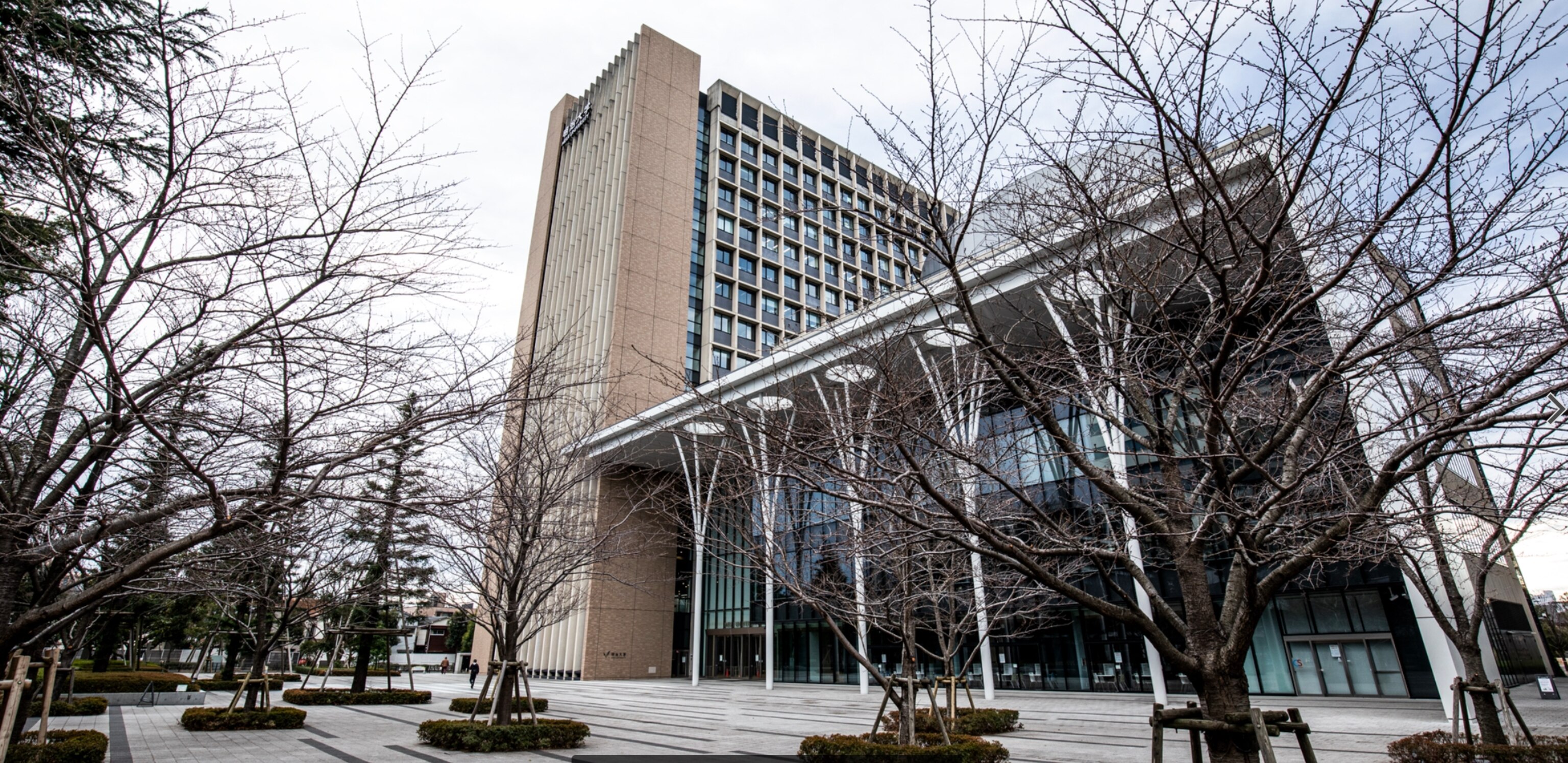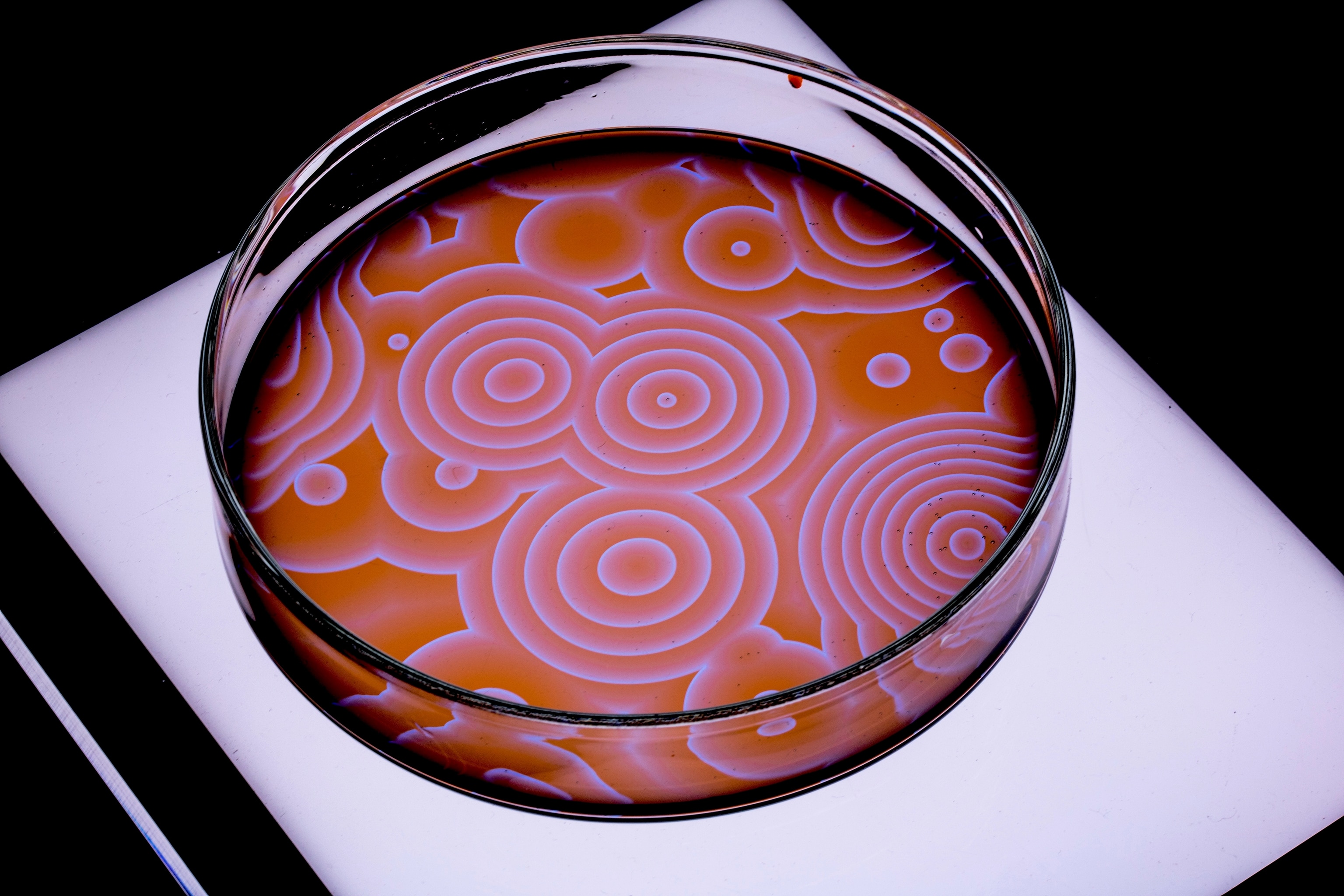For a long time, dating back to his undergraduate days around 20 years ago, Nobuhiko J. Suematsu has been preoccupied with one question: “What is life, and what is not life?” It’s a difficult question to take on, admits Suematsu, a chemist who has been on the Meiji University faculty since 2010. And the work he is doing—using inanimate materials to reproduce some of the patterns and behaviors observed in biological systems—in some ways makes it even harder to differentiate between the living and nonliving.
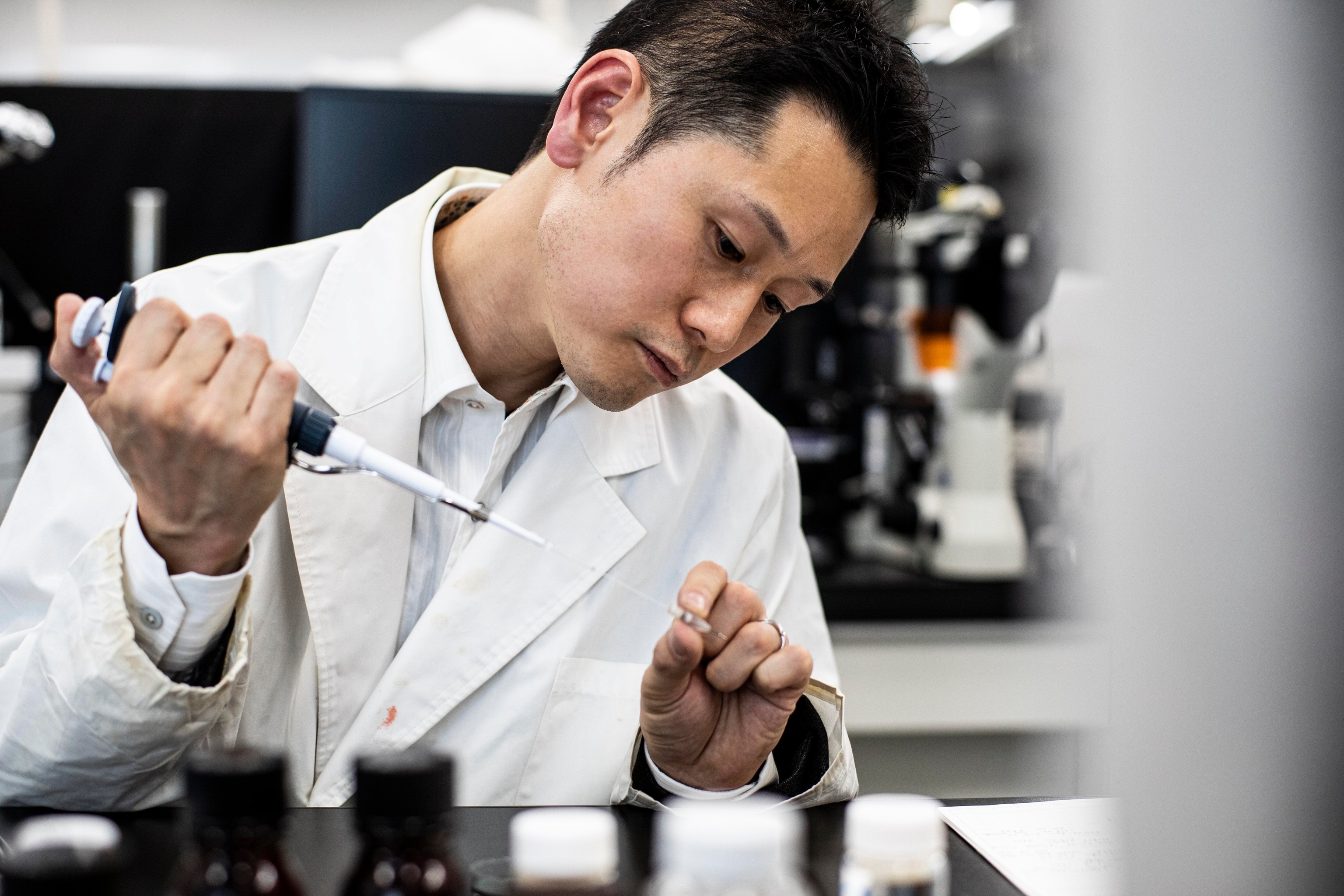
Although Suematsu’s research falls under the heading of “artificial life,” he is not trying to make the inanimate animate or create life in a test tube. Instead, he wants to understand the basic mechanisms employed by living creatures, which he does by carrying out experiments in simple, controlled settings.
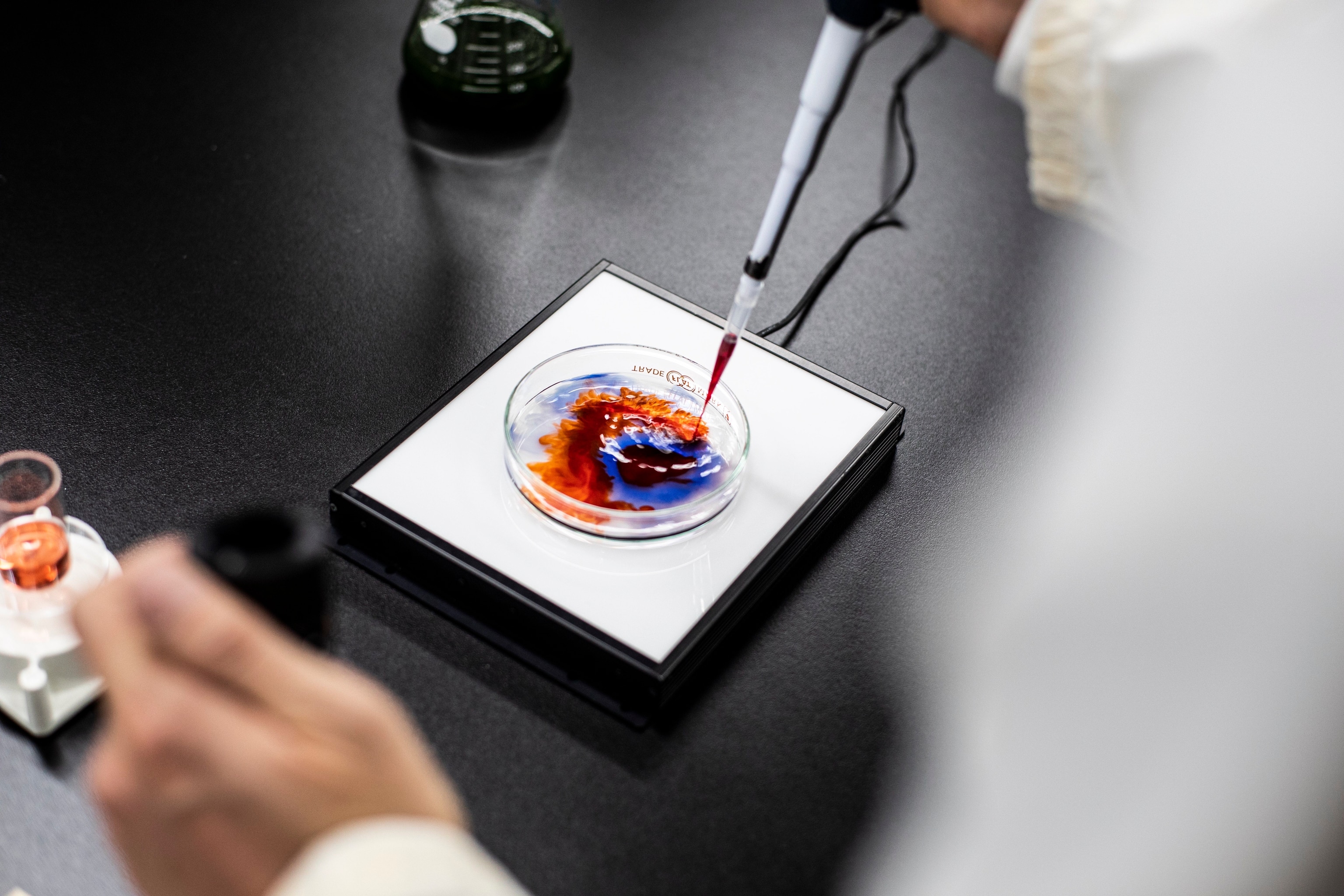
One thing that vast numbers of organisms do, for example, is to move around and—unlike an inert rock or leaves blowing in the wind—they can do so on their own. Self-propelled motion, consequently, is a major theme of Suematsu’s work.
In a paper published in 2016, he and three coauthors reported on a discovery that he has been following up on ever since. Using ordinary materials, primarily oil and water, Suematsu’s team was able to elicit life-like behavior by harnessing a chemical process called the Belousov-Zhabotinsky (BZ) reaction. This reaction is classified as “nonlinear,” which means that, after it proceeds, the system does not quickly settle into an equilibrium state. Instead, it oscillates repeatedly between two different chemical states, and these oscillations can be sustained if the system is supplied with fresh ingredients, and reaction products are removed. It should be noted, moreover, that oscillations are, themselves, a vital feature of the natural world—evident, for example, in the beating of a heart or the rhythmic firing of neurons. An oscillating chemical reaction, therefore, was well suited to Suematsu’s purposes.
His research team added a variety of chemicals—including bromine, a metal ion, a substrate, and an acid—to a water droplet suspended in an oil solution. A chemical “surfactant” mixed into the oil interacts with the bromine. That interaction leads to changes in the “interfacial tension”—the adhesive forces between molecules along the oil-water boundary. And owing to those changes, the interfacial tension becomes variable rather than uniform at all points. That creates an imbalance, which in turn exerts a force on the droplet, causing it to move in a particular direction. Through the BZ reaction, the concentration of bromine oscillates, and the droplet’s motion becomes oscillatory too, undergoing alternating cycles of acceleration and deceleration.
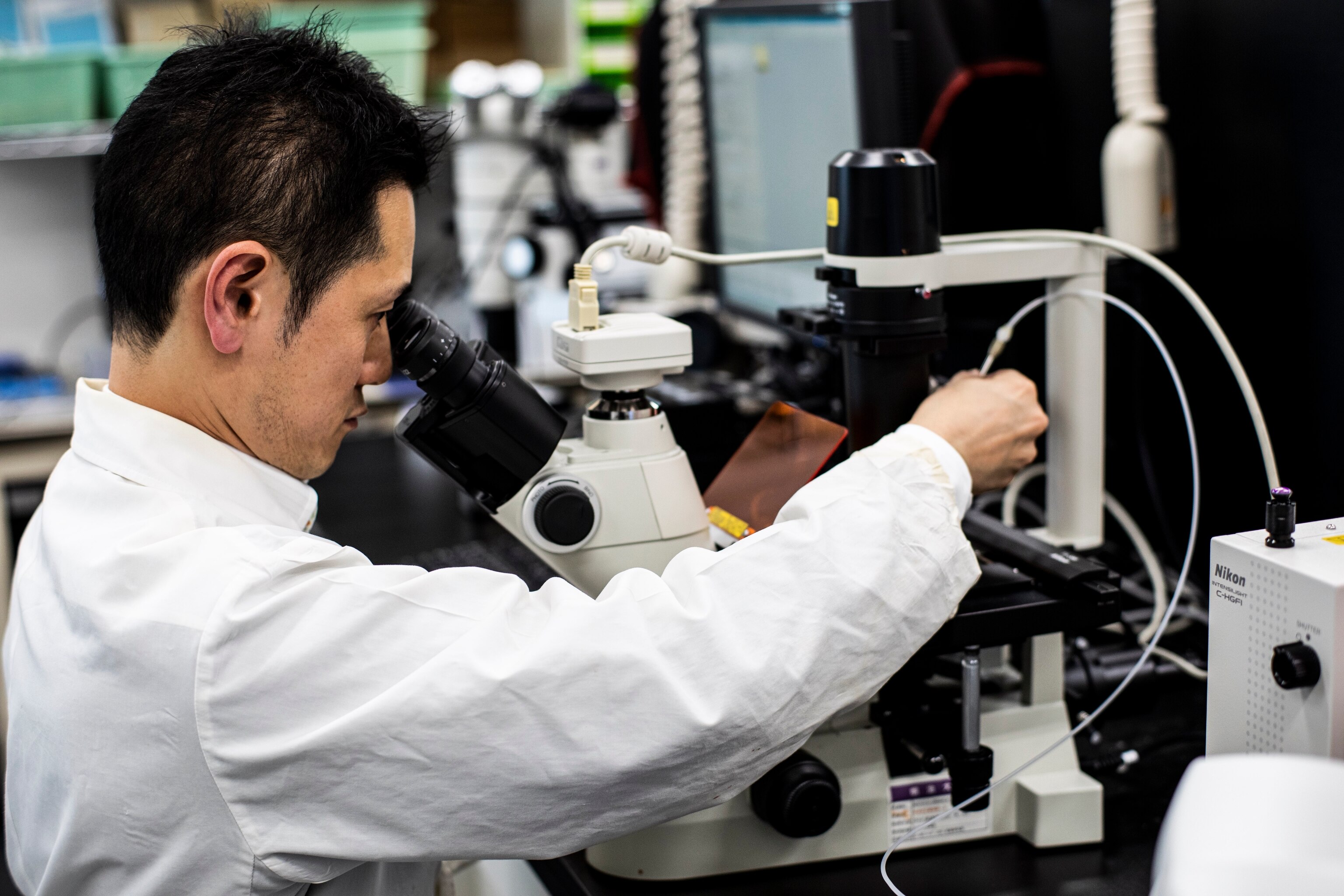
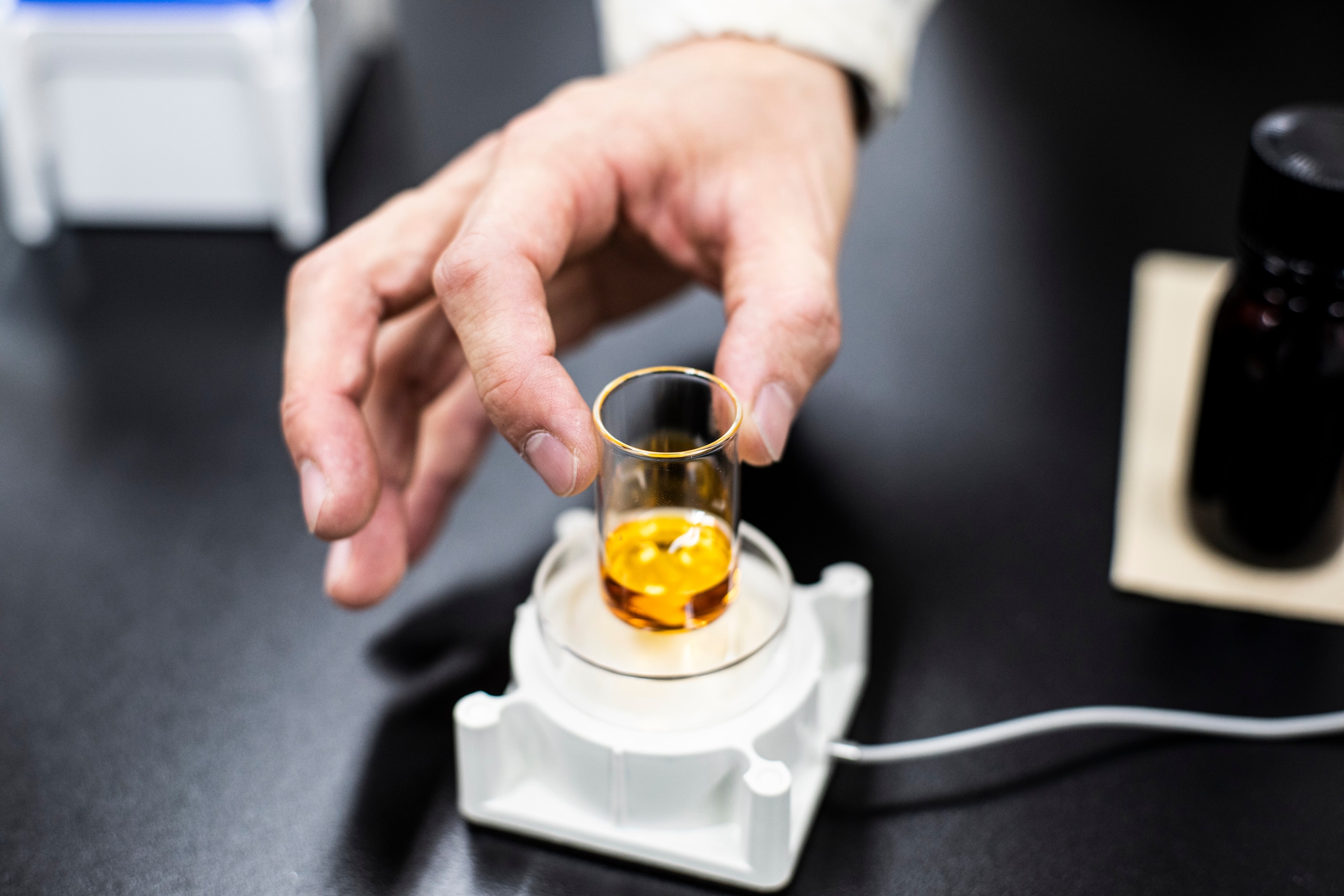
Living organisms, of course, do more than just move around by themselves, acting as solitary, independent agents. They can also interact with each other in sophisticated ways, which is why Suematsu is investigating various forms of collective behavior.
One simple tool he uses to study such phenomena is a camphor disk, which consists of a thin, circular piece of camphor—a wax-like substance—floating in water. The camphor slowly dissolves into the water, though it does so in a non-uniform way. Because of that, the surface tension, which was initially constant along the perimeter of the disk, becomes non-uniform as well, causing the disk to move—another example of a self-propelled object.
However, things get more interesting with more than one disk floating in the water, Suematsu has observed. Disks move continuously in the case of low-density, but their motions become intermittent and oscillatory in the case of high-density. Suematsu calls this dramatic shift in behavior “quorum sensing in self-propelled objects.”
Quorum sensing is a phenomenon seen in many biological systems—a situation in which the actions of an individual are influenced by the density of such individuals within a given area. That sensing capability can enable colonies to carry out coordinated activities that best serve the entire population, and it can also apply, apparently, to camphor disks. Suematsu and his colleagues, moreover, have developed a mathematical model that identifies the mechanism that governs the changes in speed or “mode switching,” as he puts it.
Suematsu continues to study other mechanisms of self-propulsion that can be demonstrated with inanimate materials, as well as different forms of collective behavior that can be evoked. One of his top priorities now is to study interactions between his artificial systems and the environment, given that practically all living organisms have the capacity to detect changes in their external surroundings and respond to them.
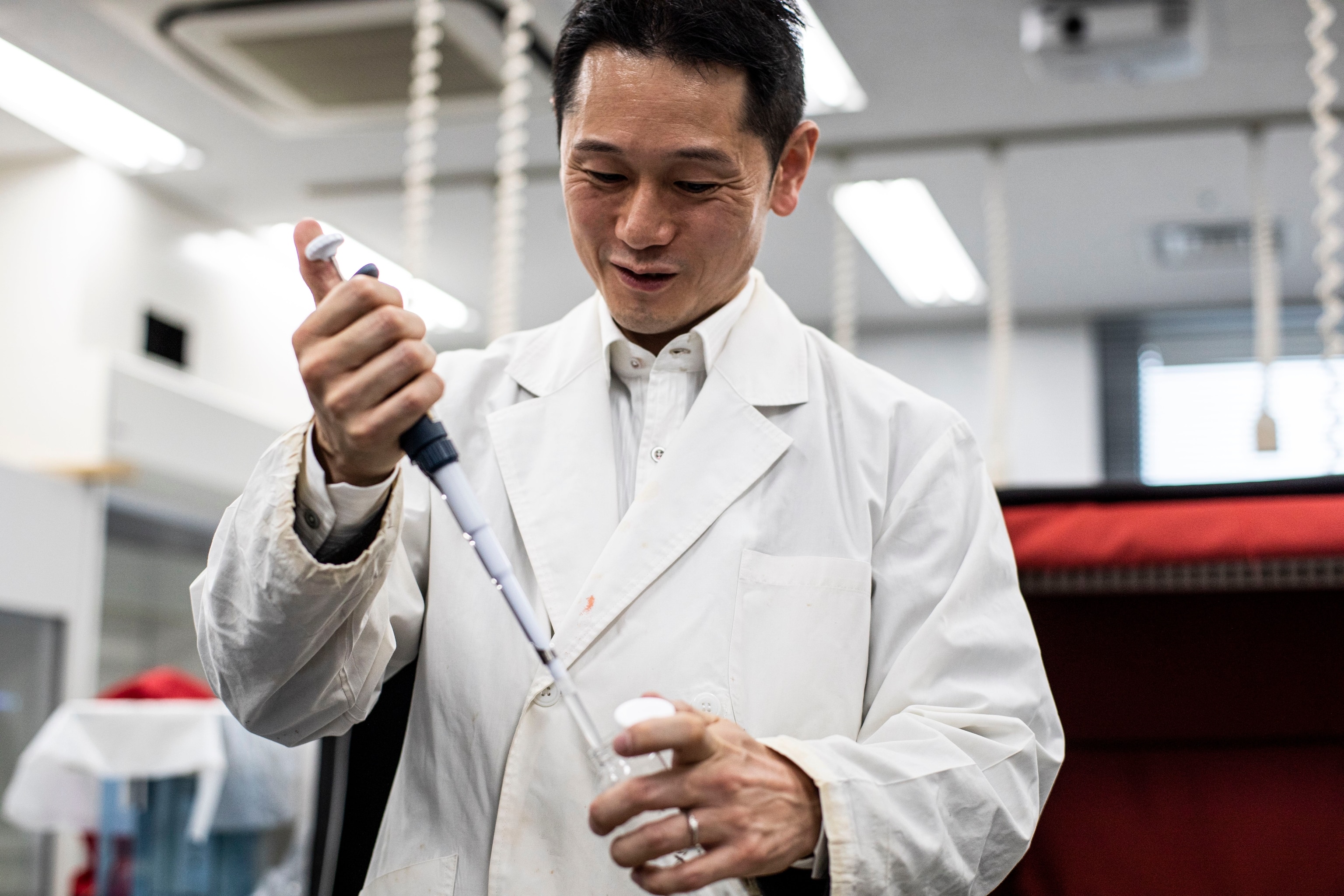
He admits that he is still far from realizing his ultimate goal—to uncover the full range of mechanisms, or operating codes, employed in biological systems—but that has not diminished his interest. On the contrary, the more he learns, the more interested he becomes.
“The first time I witnessed oscillatory behavior in a BZ droplet, it was very exciting because I didn’t expect to see it,” Suematsu says. “That gives me reason to believe that more surprises will emerge in the road ahead, and with that, hopefully, new insights will come as well.”
